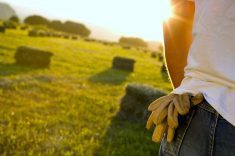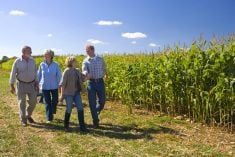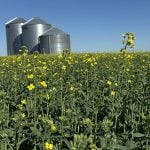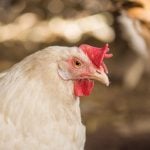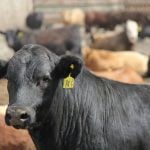1. What do you have?
For 2013, Agriculture and Agri-Food Canada pegged the average net worth of farmers at nearly $1.9 million. That might seem like enough for a satisfying retirement, but most farmers don’t want to liquidate everything as soon as they turn 65 years old. It’s important to have a list of all your current assets and investments, savings and insurance policies.
Write down what’s in bank, credit union and brokerage accounts, and off-farm accounts such as tax-free savings and RRSP accounts. There are also the farm and personal assets including machinery, grain inventory, livestock, quota and, of course, land.
Read Also
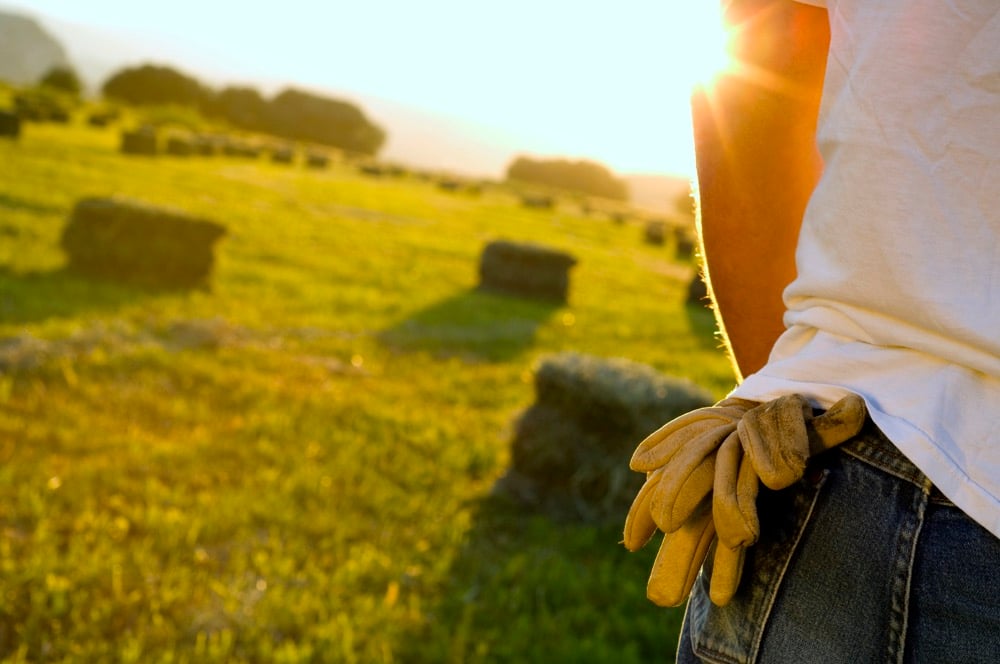
What is a farm legacy?
The definition of “legacy” in agriculture is changing. I have worked in this industry in some capacity for more than…
Farm assets can also be considered an investment and be used for retirement funding. Entering into an agreement with the successor to purchase those assets over time, and then using the loan payments as income can be part of the compromise. So can liquidating a portion or all of the farm assets.
More retirement-age farmers today are keeping their land and renting it out, says Knapp. They get the income from rent and the value of the land has appreciated in value, which leads in turn to an improved net worth statement.
Don’t forget to include the value of your home in your net worth statement. In the last few years many farmers have been using profits to upgrade homes.
It’s not a bad strategy to invest in your house, says Knapp. “It’s a personal asset too and it needs to be maintained,” she says. “But upgrade only to market value.”
Saskatoon farm adviser Don McCannell finds many of his farm clients have been building a nest egg so they have enough capital to live on and not rely on the sale of land. However, not all farmers are prepared for retirement.
“Only 27 per cent of Canadians use RRSP, collectively across Canada,” says McCannell. “Farmers tend to recapitalize into the farm.”
2. What do you owe?
The second step is to add up all your debts, including everything from auto loans and mortgages to lines of credit, term loans and lease agreements, plus revolving credit card debt, unpaid income tax and promisory notes. Your accountant should have a good handle of these liabilities.
Write them down on your net worth statement and then subtract them from your assets. This is what you’re worth today. Assante Wealth Management Saskatchewan’s website has a handy checklist to make sure you gathered all the information you’re going to need for your net worth statement. It’s at http://www.theretiringfarmer.com/pdf/checklist.pdf.
3. What will go out in living expenses?
Do you really know how much it will cost to maintain the lifestyle you want after retirement? It pays to do some research and estimate your monthly living costs, including automobile, debt payments, food, gifts and donations, insurance, medical, property maintenance, property taxes, utilities, and vacations.
On McCannell Financial Group’s website you can find a slick form to learn what you’ll need (http://mfg.ca/forms/retirement_cash_flow.pdf).
Often farmers forget that things they could write off as expenses when they farmed may have to be paid for with after-tax dollars, says McCannell.
Also, if the annual rate of inflation is two per cent, the income you need in 10 years will be about 22 per cent higher than today. If the inflation rate is four per cent, your income needs will be about 50 per cent higher. “Inflation is the biggest corrupter of any plan,” says Knapp. “We use a three per cent inflation rate built into the calculations.”
Another part that’s often forgotten is how much is paid in income taxes. For example, if you’ll need $5,000 a month or $60,000 a year, don’t forget the $12,000 to $15,000 you’ll pay in taxes and inflation. In McCannell’s experience, folks who think they need $50,000 a year actually require $85,000 to $90,000.
Generally, Knapp is impressed by her farmer clients’ knowledge of living expenses. “In my experience, most farmers have a good idea about their spending patterns, their personal budgets,” she says. “It usually ranges from $36,000 to $60,000 a year.”
With thorough planning and budgeting you’ll know if you’ll have enough money to retire on. Knapp has noticed that many people don’t include getting sick or living in a nursing home in their retirement living cost budgets. “Nursing home care can cost $2,000 to $7,000 a month, stretching living costs closer to $84,000 a year,” says Knapp.
Even if there’s not enough in savings, you can still develop a plan for such additional costs. Critical illness insurance pays out until you get better and can go back to work. Another option is a long-term health insurance plan designed to your specific situations and needs. Recently, many people are interested in refunder premium health insurance plan, so they can get the premiums back if they don’t use them.
4. What will come in as income?
After you’ve worked through all the steps above, add up your potential retirement income, including Canada Pension Plan and Old Age Security as well as corporate and independent pension plans. Don’t forget income and draws from Registered Retirement Savings Plans, Registered Retirement Income Funds, Tax Free Savings Accounts, bank and credit union accounts, promissory notes and annuities.
Old Age Security and CPP are automatically indexed for inflation each year. CPP can also provide disability and survivor benefits. However, don’t assume you’re going to get 100 per cent of these government-based pensions.
OAS is a monthly benefit available to most Canadians 65 years and older although certain requirements must be met, and it’s clawed back at certain income levels. CPP is a monthly benefit paid to those who have contributed to it and generally it’s taken right off your salary. However, if you’ve been taking dividends out of a farm corporation instead of salary, you may not have contributed much to this pension plan.
“Most farmers have a good idea about managing cash flow,” says Knapp. “They know that income ebbs and flows in this business.”
In fact, many Canadian farmers are already semi-retired. In 2007, 23 per cent of all farms reported an average of $17,485 in pension income, including Old Age Security pension, CPP and QPP benefits, other pensions, elected split pension amounts and net federal supplements. According to Statistics Canada, in total farm operators collected $1.3 billion in pension income in 2007.
“We try to get a good handle on what the income streams will be and compare that to how much we’ll need,” says Knapp. “That’s when we can start planning.”
5. Plan and save
From 2007 to 2011, net family income (non-farm work included) averaged over $100,000 a year. Agriculture and Agri-Food Canada’s projected average net family farm income to be almost $132,000 a year in 2013. How much of this income should be set aside for retirement and off-farm investments?
Knapp’s advice is that farms should keep 1.5 times the total current liabilities on hand as working capital. So for every $1 debt the farm should have $1.50 in working capital, generally enough to cover short-term needs (one to three years). Depending on how much you have in profits, she often suggests about 18 per cent could go into an RRSP and be used as a tax deduction and the remaining excess beyond working capital be put into a TFSA.
A trusted certified financial planner or an accountant can help decide which investment vehicles will work best for your retirement and estate goals.
Knapp says most of her farm clients have equity accounts and are used to market fluctuations. “Farmers are more tolerant to risk and are open to suggestions,” she says.
Investment planning is also tax planning, so use the tools available to plan for when you contribute and take out. In the farming industry, assets have grown dramatically in the last decade, as has tax liability, but life insurance and interest have remained stable, says McCannell. “It’s not how much you make, it’s how much you keep,” he says.
RRSP contributions are tax deductible and income taxes are deferred until the money’s withdrawn. The idea is to delay the payment of tax until retirement, when you’re earning less and your tax rate is lower. RRSP savings are rolled into a RRIF plan when you’re 71 years old. Then you’re required to withdraw a minimum amount each year based on your age and government regulations. A RRIF is basically the taking-out account, says McCannell.
You can also set up a spousal RRSP with the spouse as a benefactor. Another savings vehicle is a TFSA in which you can contribute $5,500 per year up to a total of $25,500. Although small, it’s very flexible, easy to set up and you can self-direct it.
Many farmers have been putting aside money for a rainy day using an AgriInvest account. For older farmers this rainy day can mean when they are slowing down, decreasing production or, in other words, retiring. Farmers can invest one per cent of Allowable Net Sales each year into this self-directed risk management account and receive a matching government contribution. Although the limit on matching government contributions is $15,000 a year, you can contribute up to 100 per cent of ANS annually and up to 400 per cent of ANS in total. This is for non-supply managed production only.
AgriInvest wasn’t designed as a retirement investment tool, but farmers can withdraw their funds from AgriInvest at any time. Research has found no direct relationship in the program’s design with money withdrawn and income decline, and no data on how AgriInvest funds are being used. Farmers have been contributing significantly to their AgriInvest accounts in the last few years, says Knapp.
Another option McCannell suggests for farms that are incorporated is for the corporation to buy a pension plan with you as the beneficiary. The cost of the IPP is deductible for the corporation. Then you set up a holding company or the pension plan and register it as an RRSP account. You can even go back 10 years of RRSP contributions, which works really well if you do it the same year you sell farm assets. The IPP funds in the holding company can either be managed by a trusted investment company or self-directed. CG



